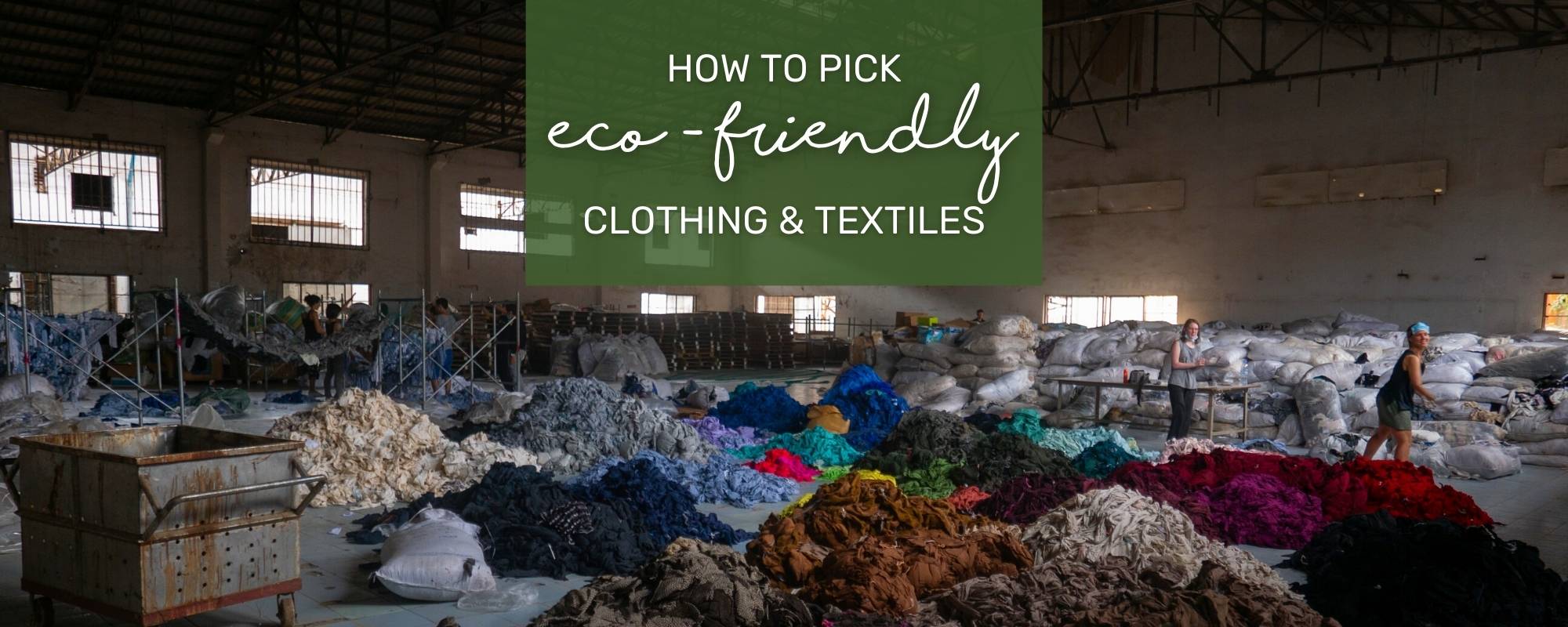15% OFF EVERYTHING UNTIL CHRISTMAS!

A Green Closet: How to Pick Eco-Friendly Clothing and Textiles
Posted on
Humans have been wearing clothing for hundreds of thousands of years. It's only natural that you place so much attention on what you wear and how it makes you feel. Besides shielding you from the elements, clothing and textiles are an essential part of who you are.
However, the need to conserve and protect resources can no longer afford humanity the luxury of sticking with inefficient textile manufacturing methods and fabrics that burden the environment.
Luckily, there are plenty of alternatives that can fill your closets without the resulting waste and pollution. Arriving at the perfect eco-friendly t-shirt, hoodie or dress is a matter of taking a few simple steps.

Start With Your Objectives
Clothing serves an aesthetic purpose as well as a functional one. The same goes for towels, table coverings, bedding, or any textile-based product. Your goal is to find a clothing item that's comfortable, stylish, and functional that you can wear for years to come.
Your first question should always be whether you actually need to buy something new in the first place. Is this something that you’ll wear and discard?
Consider skipping it, or buying a used item instead. The environmental cost of manufacturing and disposal of new clothing items is much higher than using items that have already been produced.
Dollar Price vs. True Cost
A conventional t-shirt costs around $10-$20, while eco-friendly alternatives can be more expensive. A consumer's first reaction might be to choose the cheaper option without giving much thought to the consequences. But the environmental consequences of a new t-shirt are often an even bigger cost than you may think.
The fashion industry overproduces its products by approximately 30-40% every season. Not only does this use large amounts of water and produce high levels of greenhouse gases, but it produces a large amount of waste as well. With 85% of the clothing consumers purchase ending up in landfills, and with toxic chemicals and dyes leaching into the groundwater and the soil from the decomposition process, the cost of poor textile choices is too steep for the planet.

Learn About Different Fabrics and Their Impact
Becoming familiar with the wide range of alternative fabrics will give you the flexibility to choose textiles that are comfortable and durable. Many conventional synthetic fabrics, such as nylon, are actually made from plastic, and thus have a large carbon footprint. From organic and recycled cotton to bamboo, linen, jute, and ramie, the advantages of natural fabrics are numerous.
There is no shortage of more sustainable textile options to accommodate your needs. Hemp is carbon negative, meaning that it absorbs more carbon than it emits and uses less water than cotton. In terms of sustainability, hemp produces 250% more fiber than cotton and a whopping 600% more fiber than flax for the same area of land making it the champion of yield per acre out of any natural fiber.
Look Into the Manufacturing of the Product
Buying a clothing item should be more than blindly picking it off a rack at your local store or rapidly clicking the “buy” button of an online shop.
From the farms where the raw material is collected to the factory where your product was made to the retail location, the journey of your shirt, dress, or bed sheet involves the lives of many people, not just the environment. Farmworkers, factory employees, shipping workers, and store clerks are all affected by your selection.

Making sure clothing manufacturers are held accountable for the practices they employ happens by ensuring their products undergo fabric quality control testing to ensure environmental and ethical standards are met.
You should prefer companies that are open and transparent about their standards and allow quality assurance and lab testing. Not only does this ensure sustainable products, but it helps you make sure your clothing items will last!
Understanding the Big Picture
Picking eco-friendly clothing is as much about environmental pollution and public health as it is about your style and comfort. Becoming an ethical consumer is not just better for our planet, but will likely positively affect your outlook as well.
Once you find the sustainable fabrics that meet your specifications, look for manufacturers and retailers that have a responsible view of their role in a more sustainable world. Seek out companies that you can wholeheartedly support for their vision and mission statements. Find organizations that have a love for the environment and support them with your patronage.
Written by Lena Milton
Don’t miss out on future posts so be sure to sign up for our Wild Tribe (scroll below to sign up).
New products and discounts first!
RETAIL & STUDIO
The Farm House, R527
Hoedspruit LP South Africa
Whatsapp: +27 79 225 4988
contact@wildinafrica.store
. . . . . . . . .
HEAD OFFICE
65/2 Arbor Ave, Robina
QLD 4226 Australia
